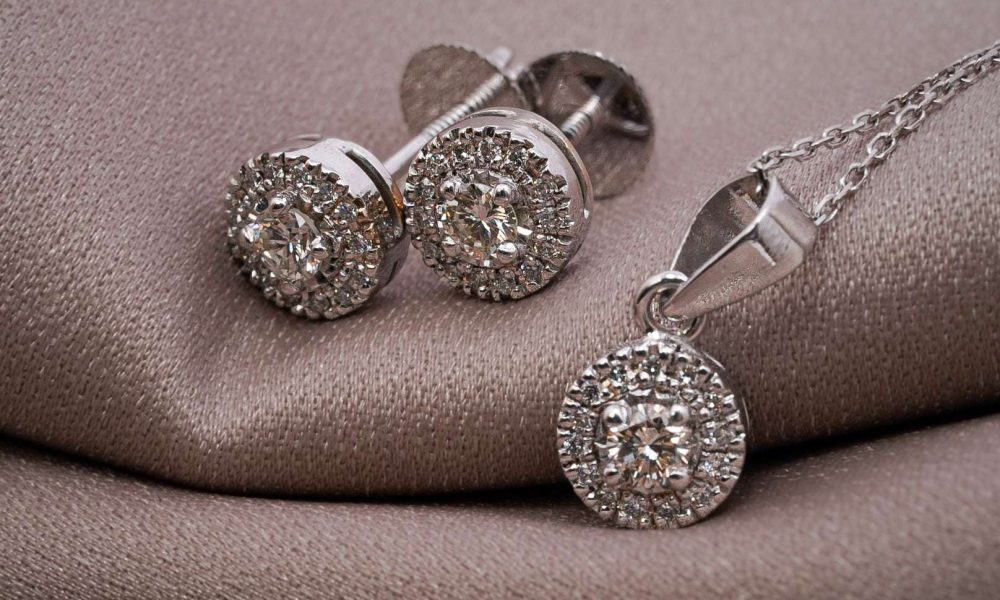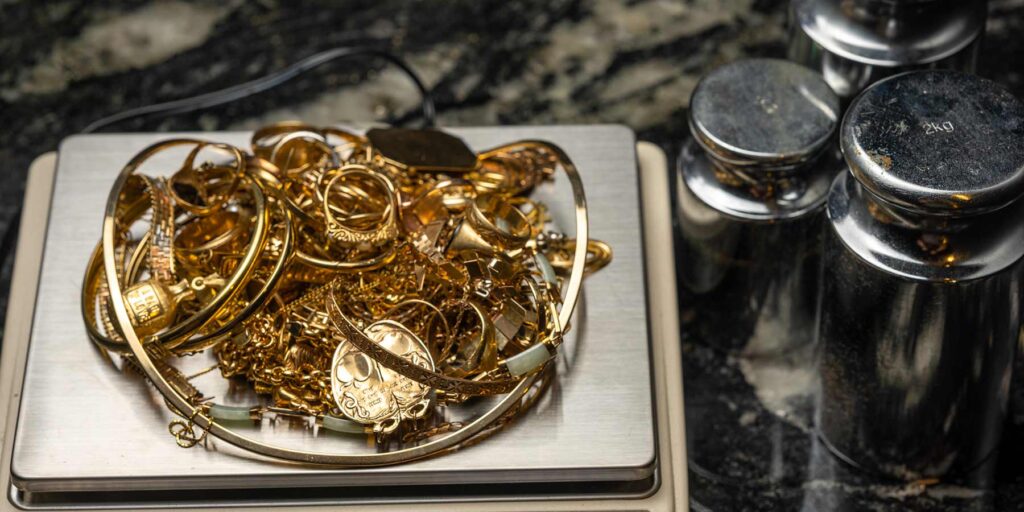Table of Contents
Introduction: Understanding the Discussion
Assuming you’ve begun researching wedding bands or excellent gemstones, you might have coincidentally found the discussion of moissanite versus diamond. While diamonds have for some time been viewed as a definitive image of affection and extravagance, moissanite vs diamond has been gaining prominence for its brightness, reasonableness, and sustainability.
In this article, we’ll bring a profound plunge into the two stones, comparing them in light of key elements like appearance, solidness, cost, and natural effect. By and by, you’ll have all the information you really want to pursue an informed choice.
What is Moissanite?
Moissanite is a gemstone that was first found in 1893 by French physicist Henri Moissan. It’s made up of silicon carbide and is known for its extraordinary brightness and fire (the brilliant glimmers of light that fall off the stone).
Origins of Moissanite
Moissanite was originally found in a meteor hole in Arizona, and being a type of diamond was initially thought. After some time, researchers understood that it was a completely unique mineral, made out of silicon carbide, and not a carbon-based gem like diamonds. Today, moissanite is principally created in labs, where it very well may be grown using trend setting innovation.
How Moissanite is Made
While normally occurring moissanite is incredibly rare, by far most of moissanite gemstones utilized in adornments are lab-grown. These lab-grown moissanites are synthetically indistinguishable from their normally occurring partners and offer a similar dazzling appearance for a portion of the cost.
What is a Diamond?
Diamonds are perhaps of the most notable and dearest gemstone on the planet. They are made out of unadulterated carbon that has been solidified under outrageous tension and temperature conditions profound within the Earth. North of millions of years, diamonds structure in the World’s mantle and are ultimately brought to the surface through volcanic emissions.
The Regular Diamond
Regular diamonds are mined from the Earth, and their unique case, combined with their stunning appearance, has made them an image of extravagance and status for quite a long time. Since diamonds require a long period of time to shape, they are often connected with affection, responsibility, and endlessness.
Lab-Grown Diamonds
As of late, lab-grown diamonds have gained footing as a more moral and reasonable option in contrast to mined diamonds. Lab-grown diamonds are synthetically indistinguishable from normal diamonds however are created in a lab using high-pressure, high-temperature (HPHT) or substance fume statement (CVD) techniques.
Comparing the Properties of Moissanite and Diamond
Now that we’ve taken a gander at the origins and production of the two stones, we should jump into how moissanite and diamonds stack up with regards to their properties.
Splendor and Shimmer
With regards to splendor (how much light the stone reflects), moissanite has a slight edge over diamonds. Moissanite has a higher refractive index than diamonds, and that implies it mirrors all the more light and has a more intense shimmer. Moissanite is around 2.4 times more splendid than diamonds, truth be told. This gives moissanite an eye-catching, searing look that many individuals love.
Diamonds, then again, have a splendor that is more unobtrusive and complex. The radiance from a diamond is often depicted as “fire,” which alludes to the rainbow-shaded streaks that seem when the stone is moved under light. While diamonds are less splendid than moissanite, they have a remarkable, immortal shimmer that many individuals treasure.
Hardness and Solidness
Both moissanite and diamonds are incredibly solid, yet diamonds start to lead the pack with regards to hardness. Diamonds are the hardest known regular material on The planet, rating 10 on the Mohs size of hardness. This implies that diamonds are practically scratch-safe and will maintain their shine over the long haul.
Moissanite, while still entirely strong, positions at 9.25 on the Mohs scale. This makes it somewhat more inclined to scratching than diamonds, yet it is still a lot harder than most different gemstones. Moissanite will withstand regular mileage, however it may not maintain its pristine condition for up to a diamond would.
Variety and Clearness
With regards to variety, diamonds range from totally boring (evaluated D) to light yellow or brown (reviewed Z). The nearer a diamond is to lackluster, the more important it will in general be. Numerous diamonds likewise have normal inclusions (little blemishes), which are evaluated in light of their size, type, and perceivability.
Moissanite, nonetheless, will in general have a slight yellow or greenish tint, particularly in lower-quality stones. Better moissanite stones can seem dull, however most will have a faint tint. Concerning clearness, moissanite for the most part has less inclusions than diamonds, however this can change depending on the stone’s quality.
Weight and Size
Moissanite stones are normally lighter than diamonds of a similar size. This implies that a 1-carat moissanite will show up marginally bigger than a 1-carat diamond. While size and weight may not be a tremendous worry for everybody, it’s something worth talking about to consider while comparing the two stones.
Value Examination: Moissanite versus Diamond
One of the main reasons individuals consider moissanite as an option in contrast to diamonds is cost. Moissanite is by and large significantly more reasonable than diamonds, once in a while costing 10% to 15% of the cost of a practically identical diamond.
Why Moissanite is More Reasonable
The essential justification behind moissanite’s lower cost is its lab-grown nature. Since moissanite can be created rapidly and proficiently in a lab, it doesn’t have a similar unique case or store network costs as diamonds. Furthermore, on the grounds that moissanite is made from a somewhat inexpensive material (silicon carbide), it doesn’t convey the heavy markup that diamonds often do.
The Expense of Diamonds
Diamonds, particularly normal ones, accompany a critical sticker price. The expense of a diamond can fluctuate in view of elements, for example, carat weight, cut, variety, and lucidity (the “Four Cs”). A great diamond with magnificent cut, clearness, and variety can cost thousands of dollars, making it an extravagance thing for some individuals.
Ecological Effect: Moissanite versus Diamond
Another critical thought in the moissanite versus diamond banter is the natural and moral effect of these gemstones.
Sustainability of Moissanite
Moissanite, being lab-grown, has a lot more modest natural footprint than mined diamonds. There is no requirement for horrendous mining rehearses, which can prompt environment annihilation, contamination, and loss of biodiversity. Thus, moissanite is viewed as a more sustainable and moral decision for those worried about the climate.
The Natural Expense of Diamond Mining
Diamond mining, then again, can have a huge natural effect. Mining activities often involve clearing tremendous areas of land, causing deforestation and soil disintegration. Furthermore, the most common way of extracting man made diamonds from the Earth requires significant energy and water assets. The ecological expense of diamond mining has driven numerous buyers to search out lab-grown other options.
Which is Better for Wedding bands?
Choosing among moissanite and diamond for a wedding band eventually relies upon individual inclinations and needs.
Moissanite for Wedding bands
Moissanite is a magnificent decision for the individuals who need a ring that shines splendidly yet without the excessive cost tag. Likewise an extraordinary choice for those are ecologically cognizant and need a more sustainable decision. While moissanite might not have similar status as diamonds, its splendor and reasonableness pursue it a well known decision for current couples.
Diamonds for Wedding bands
Diamonds, be that as it may, remain the conventional and ageless decision for wedding bands. Their unique case, magnificence, and social importance make them the go-to choice for some individuals. On the off chance that you esteem the history and imagery of diamonds, and you don’t mind spending somewhat more, a diamond wedding band might be the most ideal choice.
The most effective method to Pick either Moissanite and Diamond
Variables to Consider
While deciding among moissanite and diamond, think about your financial plan, values, and individual inclinations. In the event that you’re looking for an excellent, financial plan accommodating gemstone with incredible splendor, moissanite may be the ideal decision. Then again, in the event that you’re attracted to the unique case and immortal allure of diamonds, investing in a diamond may merit the additional expense.
Individual Inclination
Eventually, your decision among moissanite and diamond comes down to what you by and by esteem most in a gemstone. The two stones are stunning and will endure forever, so you can’t turn out badly with possibly one. Pick the stone that impacts you, and partake in the radiance!
Conclusion: Moissanite or Diamond?
The moissanite versus diamond banter at last reduces to individual inclination and needs. In the event that you’re seeking a reasonable, splendid, and sustainable gemstone, moissanite is a fabulous decision. In any case, on the off chance that you’re looking for a conventional, rare gemstone with immortal allure, a diamond might be the right fit.




